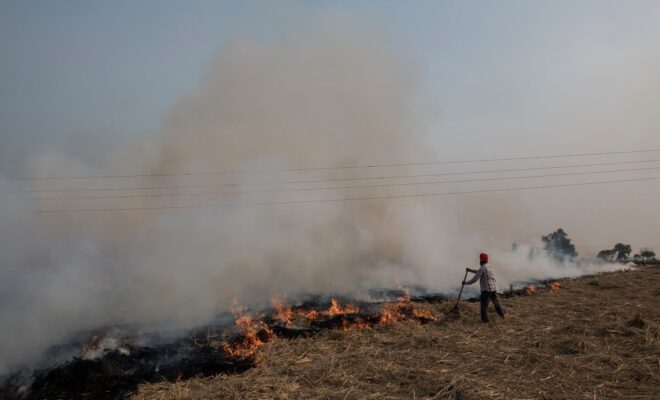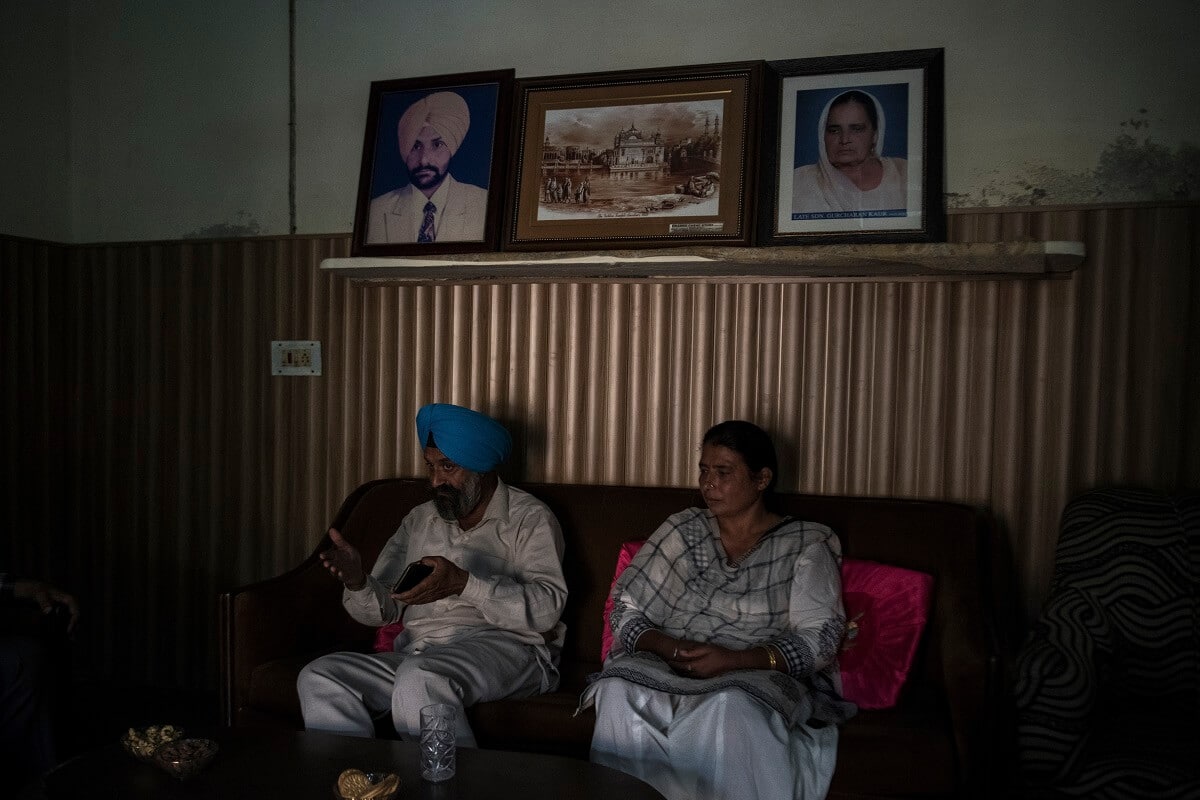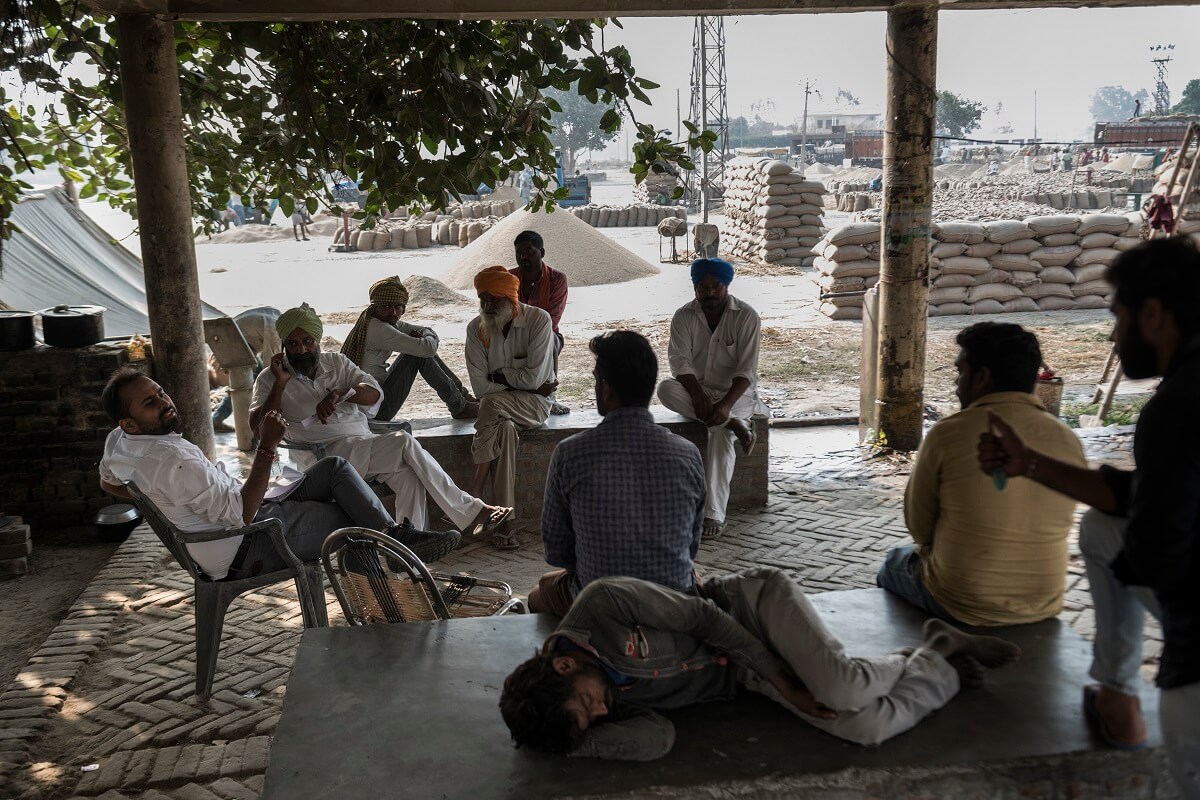Health
As World’s Air Gets Worse, India Struggles to Breathe

A farm laborer clears stubble from fields by burning it near in the village of Bishanpur Channa, India, Oct. 29, 2018.
Photo: Rebecca Conway/The New York Times
Toxic air has become a global menace that kills 7 million people each year, the United Nations Environment Program said in a bleak report
A toxic fog is creeping over New Delhi. Children trudge to school with plastic masks strapped to their faces. Sports events are canceled. Eyes burn. Throats itch. Chests heave.
It’s the dreaded pollution season in India, when the amount of vehicle fumes, dust and smoke from agricultural fires spikes to levels so high that experts say children breathing this air could suffer permanent brain damage.
Agra. Lucknow. Varanasi. New Delhi. India’s most fabled cities are now among the world’s most polluted. According to some recent rankings, India holds nine of the top 10 spots. In a sign of how many people — especially the elite — are distressed about this, shops in Delhi now sell “pollution guard” sunscreen and shampoo.
Toxic air has become a global menace that kills 7 million people each year, the United Nations Environment Program said in a bleak report released Tuesday. The bulk of these deaths are in the Asia Pacific region, it said.
This week the World Health Organization is holding what it bills as the first global conference on air pollution and health at its headquarters in Geneva.
Air pollution has become the “new tobacco,” its director general, Dr. Tedros Adhanom Ghebreyesus, wrote in an op-ed last week. “The world has turned the corner on tobacco,” it said. “Now it must do the same for the ‘new tobacco’: the toxic air that billions breathe.”
In its new report, the U.N. Environment Program outlined 25 measures that could easily reduce air pollution (which also contributes to climate change). One tactic: stopping the burning of agricultural waste like the countless farm fires sweeping across northern India right now.
While data from across India shows that hazardous air pollution continues to rise, progress is being made. The central government, for the first time, is spending more than $150 million to dissuade farmers from burning their fields.

Harinder Singh, a farmer, and his wife in heir home in Bishanpur Channa, India, Oct. 28, 2018. Singh has adopted technology to clear his agricultural land of stubble rather than burning it, a common practice that has contributed to India’s toxic air. “Our objective is to reduce pollution,” he said. Photo: Rebecca Conway/The New York Times
Take the village of Bishanpur Channa, in the northern state of Punjab. Every November, for as long as anybody can remember, Bishanpur Channa’s farmers burned dried-up rice stalks to clear the land for the next season’s wheat crop.
The sky became so sooty that the afternoons resembled evenings. The smoke drifted nearly 200 miles southeast, blanketing New Delhi. Dalbir Singh Kaleka, a farmer with a snow-white beard, said he and his neighbors put up with the discomfort because burning was cheap and easy.
“We all did it,” he said.
But this November could be different. Kaleka and his fellow farmers have been buffeted with public service messages, including a new hit song, “Don’t Burn the Stubble Brother, Don’t Burn.”
More persuasive, perhaps, is the $156 million chunk that the Indian government has set aside for subsidizing alternatives to crop burning, such as renting big steel machines that push the excess rice stalks into the ground to act as a natural fertilizer.
This year, Singh said he and many of his neighbors were trying to burn as little as possible. “Look, I do not want to pollute,” he said. “My son tells me, ‘Even if you lose money, we should save India’s image.’”
Clearly, Indian government agencies are capable of taking bold steps. Beyond the subsidies in Punjab, this month authorities shut down the last coal plant near New Delhi, and they have rerouted traffic and banned some dirty fuel sources.
But Indian environmentalists say their government is lost. At the same time it passes some measures to cut pollution, it passes others that fling open the doors to dirty air.
This year, the central government proposed removing environmental clearances for construction projects up to 50,000 square meters, or about 540,000 square feet, more than doubling the previous threshold. Dust from such projects is a major polluter; the new policies would surely create more.

Nikhil Gupta, left, an environmental engineer, holds a clinic to raise awareness about the effects on air quality of burning stubble in the village of Dhablan, India, Oct. 29, 2018. Though India’s government has taken a few steps to curb pollution, data from across the country shows hazardous air pollution continues to rise. Photo: Rebecca Conway/The New York Times
Like many developing countries, India is walking a precarious line, trying to spur infrastructure, industry and economic growth, all of which take their toll on the environment. Unlike in China, where a communist government has responded to its own toxic air by slapping criminal charges on polluters, India’s political system is much freer and messier, a sprawling democracy that often shies away from using the stick.
Last week, when a group of civil servants and environmentalists took a tour of West Delhi, they found construction sites managed by government agencies among the most flagrant polluters. At a new subway station, the overseers had not even put up proper barriers or sprinkled water to keep the dust down.
“They are taking the undue advantage of being government organizations,” said V. Selvarajan, secretary of Green Circle, a group that works on environmental issues.
The subway system was ordered to pay a fine of 500,000 rupees, or around $7,000.
In the coming weeks, air pollution here is expected to hit a choking peak. Winter will slow down the winds, meaning that still air and cooler temperatures will trap the soot and smoke that rises up from India’s incredibly crowded, growing cities.
For those in the pollution-mask business, these are profitable days.
Four years ago, when Jai Dhar Gupta, an Indian entrepreneur who went to the Wharton School at the University of Pennsylvania, started selling pollution masks, he was lucky to move 200 a day.
Now, he says, his company, Nirvana Being, sells thousands in a single day.
“We’ve seen online orders coming from villages, the northeast, Goa, places I don’t even know,” Gupta said. But it makes sense, he said, because “this is a pan-India problem.”
So many of India’s larger failures feed into the dirty air. Lacking a good system for waste disposal, for instance, many people simply burn their trash, sending plastic, rubber and other toxins into the air.
The situation is especially bad in northern India, where the Himalayas form a towering barrier that keeps clouds of dirty air parked over some of the country’s biggest urban areas. But data shows how bad the air is in just about every major Indian city.
In Chennai, on the southern coast, average annual concentrations of PM 2.5, insidiously small particles that scientists estimate have killed millions, have quadrupled in the last three years to 105 micrograms per cubic meter from 24, according to data from the first 10 months of each year gathered by the U.S. Consulate. Hundreds of miles north, in Kolkata, the numbers nearly doubled to 78 micrograms per cubic meter from 40 during the same period.
The latest figures are eight to 10 times the level of hazardous particles that the World Health Organization considers acceptable.
The air in Mumbai, India’s seaside commercial capital with some 20 million residents, is also getting worse. With two smoggy months still to go, average annual concentrations of PM 2.5 shot up nearly 50 percent in the last three years.
Experts blame a mix of factors, including Mumbai’s thickening traffic, noxious gases from landfill fires, construction dust and emissions from coal plants in the suburbs. A few local groups are trying to put pressure on the government to get serious, but they say the authorities are clueless.
“They’re trying to build more vertical roads, coastal roads, increase car traffic and put less emphasis on public transport,” said Ashok Datar, chairman of the Mumbai Environmental Social Network. “It’s like we’re investing in emission.”
India’s Supreme Court routinely steps in, like in a recent order restricting firecracker usage during the coming Diwali holiday. Its orders are not quite ignored, but they usually are not vigorously enforced either.
In Punjab, home to several million farmers, thousands of pounds of carbon dioxide have typically been released into the air every burning season.
But this year, there is reason for hope, said S.S. Matharu, a government engineer working for the Punjab Pollution Control Board. In just two years, Matharu said, the number of fires dropped by nearly 70 percent after stiff fines, advances in farming technology, and aggressive outreach in villages and on social media, including the catchy new song.
“The motherland has birds and other living creatures to feed,” the song goes, “don’t burn rice straw to choke them to death.”
Described by one farmer as the “most forward village in all of Punjab,” Bishanpur Channa has become a model. Many farmers here said that instead of burning they planned to use machines like one called the Happy Seeder, which mixes excess straw into the dirt.
“Our objective is to reduce pollution,” said Harinder Singh, 45, who yells when he talks.
But in poorer villages people seemed less inclined to change their ways. About 20 miles down the road, a group of farmers who had gathered near a field offered a list of grievances.
A government program that subsidizes harvesting equipment is still too expensive, they said. Government agents promise new equipment and then disappear. Politicians seem less interested in the poorer farmers, because their plots are so small.
Gurmeet Singh, a gangly young farmer, said that lowering pollution was a nice thought, but that with no money to spare, “the whole village will burn.”
As night fell, he walked out to his rice fields. His plot was littered with dry straw. He bent down and struck a match.
Soon enough, clouds of smoke lifted into the sky.
Kai Schultz, Jeffrey Gettleman and Hari Kumar reported from New Delhi, and Ayesha Venkataraman from Mumbai, India.
c.2018 New York Times News Service

You must be logged in to post a comment Login